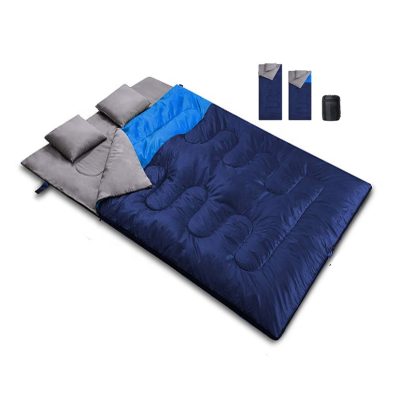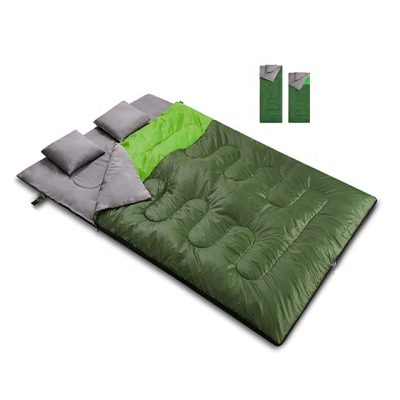Sleeping bags are one of the indispensable equipment for outdoor sleep. There are many varieties on the market, and the prices vary widely. The mysteries are often puzzling. Here are some tips for consumers when choosing a sleeping bag:
When the low temperature at night is higher than 25 degrees, you can use a fleece sleeping bag. Of course, you can also use a thin envelope-type cotton sleeping bag to cover your stomach so as not to cool your stomach. At night when the low temperature is higher than 5 degrees, you need to use a mummy-style cotton sleeping bag filled with 300 grams; or a down sleeping bag filled with 400 grams. When the low temperature at night is higher than -10 degrees, you need to use a mummy-style cotton sleeping bag filled with 350g-400g plus a fleece sleeping bag liner for better warmth; or directly use a down sleeping bag filled with more than 1000g. When the low temperature at night is higher than -20 degrees, only down sleeping bags filled with more than 1500 grams can be used.
Fans of leisure travel and self-driving travel tend to pay more attention to comfort. It is hoped that sleeping outdoors can be as warm and comfortable as at home, without demanding weight and volume. Therefore, most leisure sleeping bags use outer polyester and inner cotton fabrics, and some high-end brands even use softer and warmer materials such as flannel.
Professional outdoor sports require more weight and volume. It is the trend of lightweight equipment that has deeply influenced the design of many brands. The high-density plaid fabrics of 310T and 340T previously used on high-end down sleeping bags have appeared on some high-end brands of cotton sleeping bags. Excellent fabric and reasonable PU coating can block moisture well and prevent tearing, and the weight and fastness are effectively guaranteed. The fine 310T spring Asian textile lining is unmatched in terms of feel and comfort.

























